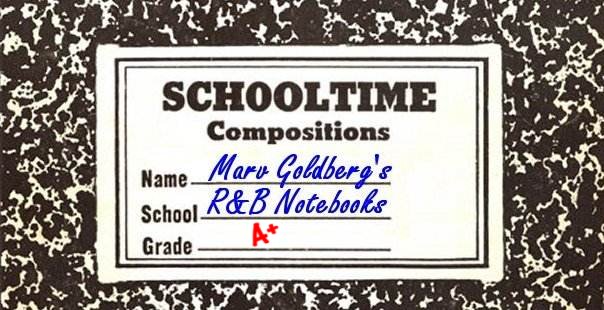
How Many Boots Do You Have?
By Marv Goldberg
© 2007 by Marv Goldberg

AUTHOR'S NOTE: A departure for me. Not being a record collector, I don't write about record collecting. As far as I remember, this is the only thing I ever wrote on the subject. This was published in Yesterday's Memories back in March 1977.
We all know about bootleg records; the pros and cons have been debated, ad nauseam, in every oldies mag. Most of you can spot a boot at a glance and, per our last readers' survey [which appeared in YM #5 in March 1976], 36% of you won't touch them. So it would seem that everything possible has been written about boots. Except this.
How many of those "originals" in your collection are really boots? "But they can't be," you cry, "I bought them 20 years ago and nobody was booting then!" [Remember, this was published in March 1977.] Oh, no? You may be in for a somewhat rude awakening.
Many (if not most or even all) of the big R&B hits of the 50s were booted while the records were popular! This even includes some 40s 78s! We are not talking about a national syndicate, but small quantities (probably no more than a couple of thousand) to be distributed locally.
Some stories we've heard are worth examining. One concerns an East Coast small label owner who figured that just because a group once bombed out on his label and now (late 40s) had a hit on a subsidiary of a major label, there was no reason why he shouldn't make something our of the deal. What he made was a quantity of counterfeit records, which he proceeded to pass off as originals. They were probably indistinguishable from the real ones. Do you own one?
Another intriguing tale is about a West Coast record store owner in the 50s who would press up a quantity of the latest hit record by whatever artist was due to make an appearance locally. The kiddies flocked in to buy the records and no one was the wiser. Would you have been? Are you now?
How could all this come about? Well, to begin with, if you owned a little label, you might have a little pressing plant to go with it. Then too, the larger companies didn't press their records all in one place. A large West Coast label might use a plant on the East Coast and maybe one in the Midwest. This means that blank labels may have been easier to come by than you might think. After all, if you had a label with the company's colors and logo, it shouldn't have been too hard to have it printed with the correct label copy to go with the song. As long as the final product is one no one will question, even if it isn't perfect, the counterfeiter did a good job.
In January, 2011, Tony D'Ambrosio related this story: "A few months ago, I met a guy who worked for Morris Levy in the early 60's. Levy, as you know, was well known for not paying royalties to artists, and in those relatively rare instances where any money was paid, the artist was always low-balled. But, here's a new one - at least on me. Levy "bootlegged" his own product. They were pressed at various plants in the Midwest and South, in quantities that usually exceed the number of "legitimate" Roulette, and later Gee, pressings. All this was done to minimize royalties paid to the label's artists. (If a question arose about the number of copies a record was selling, Levy would produce documents showing the number of records pressed/distributed. Of course, these figures did not include the copies booted by Levy.)"
Does all this bother you? It must if you're taking so many tranquilizers to steady your hands before checking out your prize collection. Don't worry, you may never be sure of your collection again, but neither will the next guy. It shouldn't have any effect on collecting, should it? Should it?
(The above incidents were related to us in the course of our interviews and are presumably true. The counterfeiters' names were omitted to save us from possible legal action.)
Special thanks to Tony D'Ambrosio.